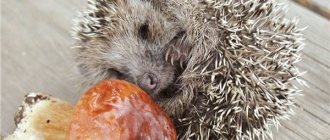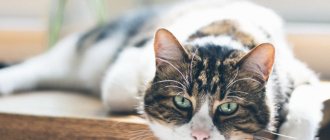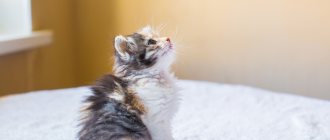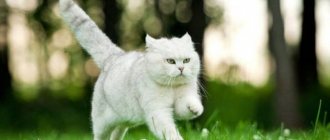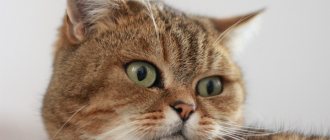British Shorthair cats are one of the most popular domestic cat breeds in the world. They are also well known for their long lifespans, many of which live to the age of from 15 to 20 years. However, what factors influence life expectancy? There are several things an owner can do to ensure that their British Shorthair cat lives a healthy life and reaches its full age.
In this article, we will discuss these tips and how they can affect your cat's lifespan.
British Shorthair lifespan
The British Shorthair cat is generally a healthy animal. As stated above, the average lifespan of these cats is around 15-20 years .
Cola the cat may be the oldest known individual, reaching the staggering age of 28 years!
Of course, these numbers apply to cats that receive proper care throughout their lives. If a cat does not receive proper care, it can have a painfully shortened lifespan. Let's look at the different factors that can affect a cat's health at different stages of its life.
Treatment and vaccination
Let's start with vaccination. Opponents of this good cause are strongly recommended to watch the first episode of the first season of the famous “House M.D.” Hugh Laurie, with the cynicism characteristic of his character, clearly explains the consequences of refusing vaccinations.
A separate song about vaccinations for domestic cats. It would seem that there is nowhere for the cattle to become infected. Especially the cattle, which don’t even go to exhibitions. He stays at home and does not communicate with other cats.
Hosts or guests come from the street. On their shoes - and we remember that proletarians have not worn galoshes since 1925 - special thanks to our Bulgakov Michal Afanasyich for this - people will bring anything into the apartment. Any helminths, any sore. Guests have their own cats, dogs, and guinea pigs, which can also be hosts or intermediate carriers for various parasites, viruses, and bacteria.
Therefore, we follow the veterinarian’s recommendations and follow the vaccination schedule. It is said to inject Multifel 4 annually - that means inject. If we don’t want the cat to become infected with one of the four infections, it’s not for nothing that the number 4 is present in the name of the drug.
Now about the treatment. If your cat doesn’t eat for a day or two, it’s time to be wary. He doesn’t eat for three - let’s go to a normal veterinary clinic. We choose according to the reviews of friends, according to the recommendations of the breeders from whom we bought the kitten. Not every veterinarian will understand a cat's needs.
How can you ensure your British cat lives a long, healthy life?
Since British Shorthair cats are prone to illnesses in old age, it is important to provide them with proper care. This will ensure that your British Shorthair lives a long and healthy life.
© shutterstock
Here are some of the problems that British Shorthair cats may encounter as they grow up:
- Hypertrophic cardiomyopathy : when thick heart cells along the heart wall limit proper cardiovascular function.
- Kidney failure : due to infections, blockage or malnutrition.
- Oral squamous cell carcinoma : This deadly cancer starts in the cells of a cat's mouth and face, is difficult to detect and is very aggressive.
- Urinary tract infections : A urinary tract infection that can cause kidney infections.
To reduce the chance of your British Shorthair developing any of these conditions, it is important to start proper care at a young age and continue it into adulthood.
When to castrate a cat
British cats are recommended to be neutered after 7 months. It is advisable that he does not have matings. By this age, his genital organs and associated systems have been formed.
At a later age, castration is possible, but some cats do not stop marking or showing interest in the opposite sex.
British people should not undergo surgery if:
- During illness;
- For obesity;
- In stressful situations;
- With reduced immunity;
- In case of intolerance to anesthesia.
There is no need for castration until 6 months of age. Rarely does puberty become fully apparent before this age.
British shorthair kittens
Most pet owners adopt their cats as kittens. The first year of a cat's life is of great importance for its overall well-being. To get your cat through adolescence and into adulthood, you must do a few things.
- Sterilization and castration . First, it is recommended to spay or neuter your cat. This will prevent medical complications and also reduce the likelihood of stray cats. Stray cats are more likely to become infected with infectious diseases and get into fights with other animals.
- Keep them out of harm's way . Secondly, always keep your British Shorthair kitten indoors only! Your kitten could get hit by a car or get poisoned; the external dangers are too great to take any chances. Additionally, you should cat-proof your home by eliminating any source of danger.
- Keep them mentally stimulated . Third, make sure your British Shorthair has plenty of things to play with and jump on. You want to make sure they don't get bored or frustrated too easily, otherwise they might take it out on your personal belongings.
- Feeding _ Feeding your cat is a major factor in the lifespan of a British Shorthair cat. You should mainly feed your pet cat food, not people food.
British woman giving birth
If a British cat begins to secrete a yellow, pus-like fluid from under its tail, these are the first signs of the onset of labor. In addition, any cat before giving birth begins to scream unnaturally and refuse to eat.
The first time British women give birth is quite difficult, and they may call the owner to deliver the baby. Therefore, it is recommended to be at home on a pre-calculated day and stock up on:
- veterinarian's phone number;
- clean scissors;
- surgical gloves;
- Vaseline;
- nylon thread;
- any antiseptic.
A serious complication of the approaching birth can be premature release of water and a kitten stuck in the birth canal. In this case, you will need the help of a veterinarian; under no circumstances try to get the kitten yourself!
On average, the first birth lasts about 10 hours. In some cases, it can last 24 hours, but no more.
Fold-eared Briton - reality or myth>>
In one litter, a British cat gives birth to up to 6 kittens. After giving birth, the “new mother” sometimes behaves unpredictably - she does not agree to feed the kittens or even turns away from them. In this case, the owner just needs to help his cat by placing the babies one by one on her nipples. After some time, she will feel a familiar smell, begin to lick them and, finally, “recognize” them.
How to name a British cat >> How to name a red, black, gray kitten >>
How to keep your adult British Shorthair healthy
Once your kitten is a healthy adult, keeping her healthy will be much easier. Cats are very independent and know how to take care of themselves.
You can still do your part by feeding them high quality food and giving them plenty of water to drink. If you have multiple cats, it is a good idea to provide each cat with their own litter box to avoid territorial disputes or cross-contamination that may arise.
Make sure your British Shorthair has the opportunity to climb on things from time to time! A bored cat will often find ways to entertain itself, and an inactive cat is more likely to get sick.
© shutterstock
Basic information, features, facts
Advantages of the breed:
- They are calm about the absence of the owner;
- Long life expectancy at home;
- Balanced;
- Smart;
- Good patience;
- Good health;
- They don't bite, they're not angry. The Angry Brit is a rarity;
- Easy care;
- Plush antidepressant.
Disadvantages of the breed:
- Chooses one owner-friend;
- Allows herself to be stroked when she wants it;
- British fur coats can cause allergies;
- Afraid of colds.
Weight of a British cat, to what age do they grow, life expectancy?
How old do they grow? Shorthairs are slow to mature, being fully formed by about 3 years of age, some do not reach maturity until 5 years of age.
An adult Briton weighs from 5 kg – 9 kg. Girls are smaller and weigh from 3.5 kg to 7 kg. Spayed and neutered animals gain slightly more weight. It all depends on proper nutrition.
Table - weight (g) of a British kitten by month
| Age | Boys | Girls |
| Newborn kitten weight | 65 — 140 | 60 — 130 |
| 1 Week | 230 — 270 | 120 — 240 |
| 2 weeks | 330 — 410 | 145 — 350 |
| 3 weeks | 390 — 620 | 200 — 410 |
| 4 weeks | 1 month | 545 — 740 | 245 — 550 |
| 2 months | 990 — 1650 | 440 — 900 |
| 3 months | 1450 — 2600 | 1000 — 1450 |
| 4 months | 2000 — 3800 | 1600 — 2300 |
| 5 months | 2500 — 4200 | 2100 — 2800 |
| 6 months | 2200 — 3500 | 2900 — 5300 |
| 7 months | 3200 — 5500 | 2300 — 3800 |
| 8 months | 3450 — 5900 | 2450 — 4000 |
| 9 months | 3700 — 6300 | 2400 — 4200 |
| 10 months | 4000 — 6600 | 2400 — 4300 |
| 11 months | 4200 — 6700 | 2400 — 4400 |
| 12 months | 1 year | 4400 — 6900 | 3000 — 4500 |
| Adult | 4500 — 8000 | 3500 — 5400 |
| Castrated | sterilized | 4500 — 9000 | 3500 — 6000 |
How many years do they live? The life expectancy of a British cat is influenced by certain factors: the presence of genetic diseases, proper feeding and care, vaccination, veterinary examinations, indoor or outdoor keeping, castration | sterilization.
Lifespan 12 – 16 years.
Basic physiological data of healthy cats, briefly
Body temperature (rectal): 38 – 38.5 ⁰C.
Pulse:
- Kittens: 180 – 200 beats. /min;
- Adult cats: 110 – 140 beats. /min.
Breathing rate: 10 – 20 / min.
Sexual maturity:
- Cat: 6 – 12 months;
- Cat: 6 – 15 months.
Estrus: 2 – 4 times/year.
Duration of estrus: 10 – 12 days.
Favorable period for mating: during estrus.
Duration of pregnancy: 55 – 65 days, depending on the breed.
Age of a cat by human standards
| 18 months - 20 years | 9 years – 52 |
| 20 months – 21 years old | 10 years – 56 years |
| 22 months – 22 years | 11 years – 60 years |
| 2 years – 24 years | 12 years – 64 |
| 3 years – 28 years | 13 years – 68 years |
| 4 years – 32 years | 14 years - 72 |
| 5 years – 36 years | 15 years – 76 years |
| 6 years – 40 years | 17 years - 84 |
| 7 years – 44 g. | 19 years - 92 |
| 8 years – 48 years | 20 years – 100 years |
Behavior, character, habits
The British Shorthair is soft and calm, an excellent family companion. Loves affection, but is not the “me, me, me” type of cat. Will follow you around the house throughout the day, settling nearby wherever you go. These cats are unlikely to lie on your lap and do not like to be carried or held. Will enjoy the company of their human family members, spending time playing or sleeping in the same room. They are felines with a moderate level of activity. Energetic as a kitten, but begins to calm down when he is one year old. More mature British Shorthairs are usually “coolies”, but older males sometimes act like goofballs. When running around the house, they can sound like a herd of elephants.
Behavior in public places, instincts.
Each kitten has its own character and habits. British cats are calm towards strangers. One will make contact immediately, the other will observe from the side. If a cat rarely goes to public places or transport, he will be wary and hide - this is a normal reaction to an unfamiliar environment.
The British are an artificially bred breed, but the instincts have not gone away. British cats are excellent hunters, tested at the dacha and based on reviews from owners; Often cats need help during childbirth.
Attitude to extraneous sounds.
Extraneous sounds, rustles, objects arouse interest, and as a result the cat goes to investigate. At such moments, you need to come up and support, stroke and calm her, and explain. When the vacuum cleaner is running, they go into another room, there are cats from our litters who are absolutely calm about the vacuum cleaner, the new parents of the kittens said.
Behavior in the house, how to properly organize space.
The British love to play, the most active age is up to 4 months, they remain playful for up to a year, after which they become adults, important, calm, sleep and watch more. Based on observations of our pets, I can say that they love high play structures and sleep in houses only when it’s cold. Britons are large and weighty, so the complex with the scratching post must match. Among the toys they like are “flyers” with feathers or leather ropes, bouncy balls, and mice; mazes, boxes, etc. The main thing to remember is that the toy must be safe. British adults love to spend time with their owners at the computer and TV.
Toys, treats, suitable types of entertainment, is training possible?
Kittens love toys, especially new ones; if there is no new one, they can invent a toy for themselves: they will steal a hair tie (very dangerous because they can eat it), a candy wrapper, a piece of paper, or a cap from a plastic bottle. One of our graduates in her new house got used to removing a corner from the baseboards and moving it around the house.
They won’t refuse “sweets”; our pets have treats: vitamins, wet food and canned food.
Training is possible; in our nursery, from childhood, we teach him a scratching post, a name, a tray, and the word “no.”
Solitary behavior, sabotage, useful activities.
The British tolerate loneliness calmly, of course we are talking about the time when the owners are at work, mostly cats eat and sleep at this time, waiting for the evening.
If a Briton is offended, he will definitely show his dissatisfaction, he may be harmful, this will happen right away, he will not accumulate resentment.
British cats are for any movement in the house, for any repairs, they love to take part in it.
Communication with other animals, children, owner. Aggressiveness.
If a British cat is pedigree, she has pedigree titled parents, then 99%, she will be balanced, because... unbalanced ones are disqualified from examination and should not go into breeding, so it is important when buying a kitten to contact official nurseries.
Our beauty came to us before the birth of the child, but she accepted her daughter calmly, even slept with her in the crib. The kittens already appeared with the child, grew up, played together.
If the cat is “loner”, it will react aggressively to any strange animal.
Emotionality.
It all depends on the character, one is more emotional and loves to talk, the other is calm.
If a British cat is not bothered by anything, it will behave calmly; if the cat has problems, it will definitely show it.
Several pets in the house, intersexual relations, attitude towards other pets.
While the mother is feeding, she treats the kittens normally, when the kittens grow up, she begins to be loyal to someone, while others can be annoying. Cats do not have the concept of mother-son; a cat-son can breed a cat-mother. Cats and cats can live together if they psychologically tolerate this living well. They are separated during estrus.
They bought kittens from us for a house where dogs lived, they all adapted and got along fine.
Attitude to heat and cold.
The British don't like hot beds. In summer, they often look for cool places (floors, tiles); in autumn and spring, before heating, vice versa. They sleep where they want and how they want, there is no one favorite place.
In what situations do they vote? How clean?
Depends on the character. The cat wants to talk - talk to him.
The British are very clean, they demand clean bowls and fresh water - this is right. They don't like to swim, but they tolerate it steadfastly.
Health, care
The British breed is healthy and does not suffer from many genetic problems. May have diseases: hemophilia B, hypertrophic cardiomyopathy, polycystic kidney disease, gingivitis.
Brush your teeth to prevent periodontal disease. Daily oral hygiene is best, but weekly brushing is better than nothing. Trim nails weekly. Wipe the corners of your eyes with a cotton pad containing a special solution to remove any discharge. Use a separate cotton pad for each eye to prevent infection from spreading.
Check your ears weekly. If they look dirty, dry them with a cotton pad and ear spray.
Correct British wool is similar to a mouton (plush), short, elastic, with a good undercoat. With a properly balanced diet, maintenance is minimal. We bathe cats once a year, brush them a couple of times a week with special combs or a rubber comb. During the molting period, you have to brush more often. The main thing is to choose the right care products and balance your diet. You cannot use slicker brushes with fine teeth without protected ends, you cannot wash them frequently, it is better to use special napkins for wool.
Omnivorous, prone to obesity.
The British are not very active; they prefer to lie down. The tendency towards inactivity means that you need to play with your cat regularly for its health and mental stimulation.
The British are picky eaters; if you find good food, the problem will go away. Neutered or sterilized cats are prone to overeating and obesity. We are responsible for those we have tamed and must monitor what we feed and in what quantity. It is better to use special feed, following the norm depending on the weight of the animal.
Read more about feeding here.
How to care for an older cat
When your cat reaches 11-15 years of age, she will be considered a geriatric or senior cat. As with people, health problems may begin around this time.
- Diet and exercise
It is important to ensure that they have a healthy diet so that their kidneys and liver can continue to function normally. You also need to be careful with the treats you give them, as too many calories can lead to weight problems since they don't exercise as much.
With their weakened bodies, older cats may also need walking. Walking your cat may seem strange, but it can be beneficial for them. They may not want to get up and move around on their own, so you should do this at least once or twice a day.
- Monitor your symptoms
During this period, it is more important than ever to monitor any changes in their behavior, appetite and toileting habits. Some clues that your senior cat may need some extra help include: sleeping for long periods of time, not grooming enough, using the litter box incorrectly, or sudden weight gain.
The most important thing to do is talk to your veterinarian about any changes in your cat's behavior.
Skin diseases
There is a fairly extensive list of skin diseases in cats. These include scabies and dermatomycosis. Fleas, mosquitoes and ticks, allergies are often the cause of eosinophilic granuloma. Hair lice and other parasites cause great suffering to furbabies.
Skin diseases of the British cat
The pet's belly hangs
The formation of a small skin fold in a British person may be normal. Scientifically, this fold is called the fat tail. It is worth observing the behavior of your pet. If he is active and has a good appetite, then there is no reason to worry. But if a hanging belly is associated with obesity, then it is worth reviewing the diet and putting the cat on a diet. If you have no appetite, you should be concerned and contact your veterinarian. The reasons for this phenomenon may be different.
Common health problems in British cats
Cats suffer from a variety of minor illnesses that do not pose a real threat to shortening their lifespan. However, some diseases or conditions are more serious. The most common diseases of British Shorthair cats are arthritis, kidney disease and diabetes. These diseases can be prevented with regular veterinary examinations and careful pet care.
Other factors that can affect a cat's lifespan include dental problems, which can lead to malnutrition or brain damage from an accident (such as a fall).
An overweight British Shorthair cat is also at risk of developing arthritis or diabetes as they age. A pet owner should ensure that their cat does not become overweight by monitoring her weight using a scale and feeding her accordingly.
Article by: Oliver Jones Oliver (Ollie) Jones is a zoologist and freelance writer living in South Australia with his wife Alex, their dog Pepper and their cat Steve. Originally from the USA, Ollie has a Master's degree in Wildlife Biology and moved to Australia to pursue his career and passion, but has found a new love for working online and writing about animals of all types.
Famous British centenarians
Many representatives of this breed have claimed the title of long-liver:
- The owners of the British cat Muskatik, who was approximately 31 years old, applied to the book of records. But the problem was that the animal was found on the street in 1990 and the veterinarian determined that the cat was 5 years old at that time. Now the owners are proving the truth of this statement and are trying to legitimize the national longevity record.
- The same fate befell the famous Lucy from South Wales, who lived for 43 years. Picky experts doubted the authenticity of the cat documents and did not perpetuate the memory of this animal.
The lifespan of British cats must be divided into two unequal parts. The first includes early childhood and reaching puberty.
If at this time the animal is fed well and is under the constant supervision of a veterinarian, then the second half of life (maturity and old age) will pass quietly and will not end soon.
Maximum attention and love for the furry pet is all that is needed for the cat to live next to its owner for as long as possible.

